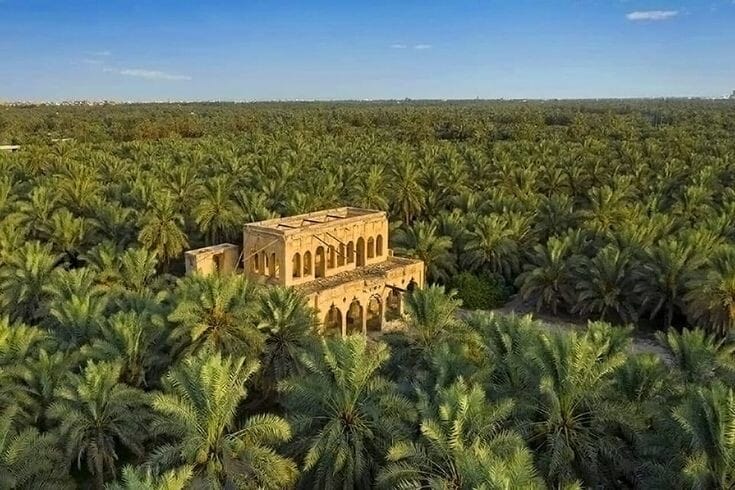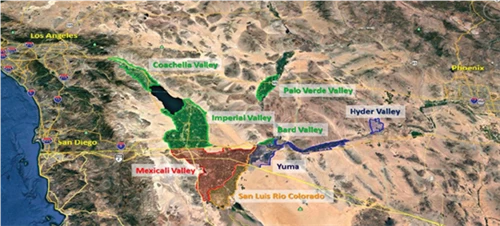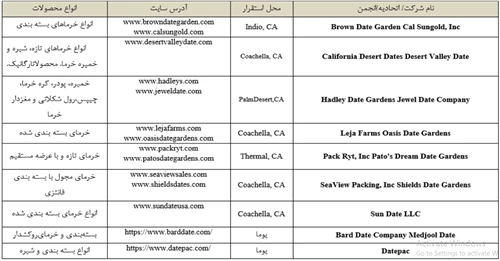
Dates were first introduced to the United States from Spain in 1492 as seeds
Date Production in the United States
Spanish colonizers began planting these seeds in the deserts of California and parts of Mexico. Due to the favorable climatic conditions of these regions, date palms quickly gained popularity among farmers. However, after the early 19th century, planting dates using imported seeds was largely unsuccessful. As a result, the USDA started importing offshoots of various date varieties from date-producing countries in North Africa and the Middle East.
The first successful experimental importation of offshoots occurred in 1900 from Algeria, yielding positive results. This encouraged further imports, and by 1902 and 1905, varieties from Iraq, Baluchistan (likely Iran or Pakistan), Egypt, Algeria, and Tunisia were introduced to the United States.
Between 1890 and 1929, over 20,000 offshoots were imported experimentally and planted in trial orchards. Key developments during this time included:
- Establishing experimental date orchards and a research station for dates and citrus in California.
- Opening the first date packing unit, American Date Co., in 1912.
- Forming cooperatives and associations, such as the Coachella Valley Date Growers Association (1913), the Coachella Valley Date Association (1919), and the California Date Growers Association.
By the same period, date packing units gradually became operational. Today, 90% of U.S. dates are produced in California, particularly in the Coachella Valley in Southern California. Other states producing dates include Arizona (Bard Valley northwest of Yuma), Florida, Nevada, and Texas.
In 2020, California's 12,500 hectares of date orchards produced 49,300 tons of dates. The yield per hectare was 3.94 tons, with an average price of $2,320 per ton, resulting in a total production value of $114 million.

Imported Varieties and Cultivation
Dates in the U.S. were imported primarily from North African and Middle Eastern countries. The main varieties cultivated include:
- Deglet Noor – Yielding 90–140 kg per tree.
- Medjool – Yielding 70–90 kg per tree.
These two are the most commercially grown varieties. Deglet Noor was introduced to the U.S. in 1900 and became popular due to its adaptability to California's climatic conditions. Originating from Touggourt, Algeria, Deglet Noor remained dominant until the introduction of Medjool dates from Morocco. Due to their superior appearance and adaptability, Medjool dates quickly became more popular, reducing the cultivation area of Deglet Noor.
Currently, Medjool is the second most cultivated variety in the U.S. In Coachella Valley, the planting ratio is 70% Deglet Noor, 29% Medjool, and 1% other varieties. In Bard Valley, Arizona, 100% of the dates are Medjool. Overall, Medjool dominates U.S. date expansion programs.
Other notable varieties in the U.S. include:
- Barhee (origin: Basra, Iraq; yield: 140 kg per tree).
- Dayri (origin: Iraq; yield: 70–90 kg per tree).
- Halawi (origin: Iraq; yield: 90–115 kg per tree).
- Khadrawi (origin: Basra, Iraq; yield: 55 kg per tree).
- Thoory (origin: Algeria; yield: 90–115 kg per tree).
- Zahidi (origin: Iraq; yield: 90–135 kg per tree).
Date Packaging and Processing in the U.S.
The U.S. date industry is relatively small compared to other date-producing countries. It began expanding in the early 20th century. Initially, most dates were consumed fresh, but some were processed into value-added products.
Despite being a small industry compared to the broader U.S. or California agriculture, date farming is significant locally, especially in California's desert valleys. Additional income is generated by selling date palms for landscaping, though this revenue is not recorded in agricultural statistics. Date palms in desert valleys are protected against diseases through government quarantine measures. These orchards also enhance local tourism, offering picturesque views and attracting visitors to the region.
However, the U.S. date industry faces several challenges, categorized as economic and environmental:
- Economic Challenges:
- Market Development: Americans consume fewer dates compared to Middle Eastern countries. Expanding domestic and international markets is essential as production increases in California and Arizona. Exporting dates may face difficulties due to high production costs. Since dates are primarily consumed in lower-income countries, the high price and transatlantic shipping costs make U.S. dates less competitive.
- Environmental Challenges:
- Soil and Water Quality: Coachella Valley soils have low organic matter and layered structures that can restrict root growth. Excessive machinery use has compacted the soil further. Water scarcity, salinity, and salt accumulation also pose challenges, though improved soil and water management can alleviate some issues.
- Urbanization: Growing urbanization increases land value, taxes, and water competition, sometimes creating conflicts between urban and agricultural needs. While Bard Valley and Yuma County currently face less urban pressure, urbanization in Yuma may increase these challenges in the future.

Date Packaging and Standards
In the U.S., date packaging is typically performed by growers, cooperatives, or third-party companies. Due to the industry's small size, specialized equipment for date packaging is rare, and generic fruit-packing machines are often used. Smaller independent producers operate relatively simple packing lines. Recently, a specialized date processing unit was established by the Medjool Date Growers Association in Bard Valley, Arizona, under the name Datepac.
U.S. standards for dates are defined in CFR 7 Part 987, which applies to Deglet Noor, Zahidi, Halawi, and Khadrawi varieties grown in Riverside County (e.g., Coachella Valley). These standards are overseen by the California Date Administrative Committee in Indio, California. Bard Valley and Yuma County have a separate association for Medjool growers.
Processed Date Products
While most U.S. dates are consumed fresh, lower-grade dates (primarily Deglet Noor) are processed into:
- Industrial-use products.
- Consumer products like date butter and syrup.
High-quality dates are also transformed into value-added products such as stuffed dates, sugar-coated dates, or dates mixed with nuts. Unlike other countries, the U.S. date industry focuses solely on fruit production, with no industrial use of other parts of the palm.
Date Consumption in the U.S.
The date industry actively promotes the use of dates both for fresh consumption and culinary purposes. Health benefits are emphasized for fresh consumption, while culinary campaigns aim to incorporate dates into gourmet dishes.